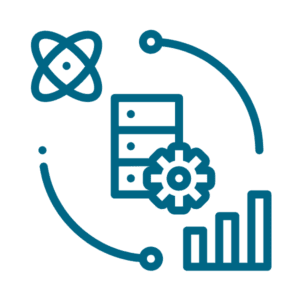Three Challenges in Ad Sales Forecasting
It’s not new that sales organizations across industries struggle to achieve the holy grail of an accurate forecast. There are many root causes for these challenges. They range from overconfident sellers who inflate their pipelines to sellers who withhold bad deal data for fear of repercussions. Sellers maintain two sources of truth between CRM and their own private spreadsheets. Organizations often struggle to define and properly communicate any semblance of a true forecasting methodology, leaving sales managers and sellers reporting their numbers as they see fit.
Typical forecast reports are missing key data necessary to roll up a proper forecast across sellers. Any data that makes its way into formal reporting is often riddled with inaccuracies, leaving sales managers guessing and spending hours adjusting numbers. Obtaining an accurate forecast at the executive level requires aggregation of forecasts across several departments. This demands heavy manual effort only to be left with data that is highly spotty and inflated at best.
How can ad sales executives leap forward and overcome these challenges? It starts with understanding some of the root causes for inaccurate forecasting in ad sales.
1. Security
Publishing groups are siloed and competitive. Ad sales organizations represent publishing conglomerates boasting a multitude of titles and digital properties. Different publishing groups leverage different systems when it comes to tracking data like accounts, RFPs, IOs, and sales activities. Simply putting a centralized system in place is never the answer. Sales processes must be centralized across groups to ensure consistency around data entry. Organizations even face challenges in maintaining the sophisticated security models that ad sales teams demand to ensure the privatization of data between publications. If the right security model is not in place, ad sellers are reluctant to share accurate forecasts for fear of competition.
Without proper change management and the guarantee of security, forecasting across publishing groups may be impossible unless a more nuanced approach is taken.
2. Forecasts
Capturing a meaningful forecast is complex given multiple media types. Ad sales organizations sell across various media types, spanning print, digital, events, subscriptions, agency services, and more. Forecasting at a granular level is critical for organizations to understand projected spend by media type for it to be relevant and helpful for decision-making. Due to limitations in CRM and order management systems, it’s difficult to understand projections at the media-type level without deep investment in system architecture, data, integration, and analytics.
3. Timing
Ad sales is often transactional. This results in data too late in the sales funnel. The transactional nature of print ad sales, the complexities of digital, and the unavoidable black box when it comes to programmatic make it more challenging to build a proper forecast in ad sales.
This sales environment demands upfront input by sellers on their estimates for their accounts for a given period. Compared to waiting until an RFP or IO comes in or when a digital campaign is in the planning phases in order management. CRM systems are designed around this nature of ad sales and essentially become order entry systems. This ultimately results in ad sellers adding key data necessary too late.

Where can ad sales executives go from here? We uncovered one of the most effective ways to combat these challenges is to equip teams with solutions to perform early-stage account-based forecasting and IO-based forecasting. This pushes sales to forecast at the advertiser account level versus relying on order data to formulate their forecasts. Customized account planning tools enriched with integrated last year and current YTD actuals enable organizations’ success in capturing and accurate forecasting. Not only across advertisers but also spanning titles, digital properties, and media types.
Building Trust Starts With A Conversation.
Contact Us today to discuss how the expert team at V2 can help your team make the right vendor choice!


